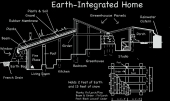








"You must be the change you want to see in the world." "First they ignore you, then they laugh at you, then they fight you, then you win." --Mahatma Gandhi
"Preach the Gospel always, and if necessary, use words." --Francis of Assisi.
"Family farms work when the whole family works the farm." -- Adam Klaus




Idle dreamer




"You must be the change you want to see in the world." "First they ignore you, then they laugh at you, then they fight you, then you win." --Mahatma Gandhi
"Preach the Gospel always, and if necessary, use words." --Francis of Assisi.
"Family farms work when the whole family works the farm." -- Adam Klaus




Idle dreamer








Idle dreamer









Idle dreamer




Brenda
Bloom where you are planted.
http://restfultrailsfoodforestgarden.blogspot.com/








'Science is the father of knowledge, but opinion breeds ignorance.' - Hippocrates




Idle dreamer









Get involved -Take away the standing of corporations MovetoAmmend.org




Morgan Morrigan wrote:cheapest way to modify a suburban home would have to be bury it.
Idle dreamer





Morgan Morrigan wrote:cheapest way to modify a suburban home would have to be bury it, or build adobe walls around it w/foam/stucco on exterior.
seems like a double roof with the 4 ft eave's would be next cheapest. If you can do the engineering yourself....
in-floor heating tubes are gonna be big in a couple years, and if you have a swamp cooler, you could use the chilled water for in-floor chilling.
You actually want the water AND the air as warm as possible , so it evaporates easier. The upgrade for swamp coolers, was down draft vents for the panels, that took super heated air off the roof surface for increased water evap ! counter-intuitive i know. Would prob help in more humid areas too.
A lot of folks put their coolers on the shady side of the house thinking it will help em work better, and some put ice in em for a quick chill, but both are counterproductive. painting the top white is good tho....




Idle dreamer





Tyler Ludens wrote:My main concern would be mold and mildew growing in the tube.

|
Did Steve tell you that? Fuh - Steve. Just look at this tiny ad:
Learn Permaculture through a little hard work
https://wheaton-labs.com/bootcamp
|




